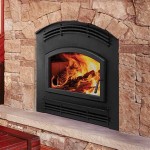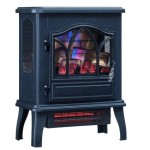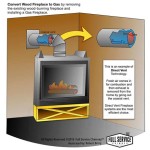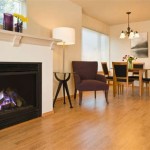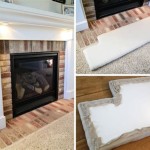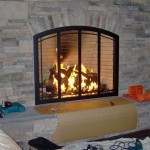Small Corner Fireplace Heater: Efficient Heating Solutions for Compact Spaces
Corner fireplace heaters represent a practical and aesthetic solution for providing supplemental heat to rooms, particularly those with limited space. These units, designed to fit snugly into corners, maximize available area while delivering focused warmth. They come in a variety of styles and fuel options, catering to different decorative preferences and heating needs. Understanding the features, benefits, and considerations associated with small corner fireplace heaters is crucial for making an informed purchase decision.
The primary function of a corner fireplace heater is to supplement an existing heating system. This can be particularly useful in older homes, apartments, or rooms that are difficult to heat adequately with a central heating system. By concentrating heat in a specific area, these heaters can reduce reliance on the main heating source, potentially leading to lower energy bills. Furthermore, the visual appeal of a flickering flame can create a cozy and inviting atmosphere, enhancing the overall ambiance of a room.
Corner fireplace heaters are available in various fuel types, each with its own advantages and disadvantages. Electric models are perhaps the most common due to their ease of installation and operation. Gas-fueled options offer higher heat output but require venting and professional installation. Ethanol fireplaces provide a vent-free alternative but require readily available fuel. The selection of the appropriate fuel type depends on individual requirements, building codes, and existing infrastructure.
Space-Saving Design and Aesthetic Appeal
The defining characteristic of a corner fireplace heater is its triangular or angled shape, which allows it to be positioned in the corner of a room. This design optimizes space utilization, making it ideal for smaller rooms or areas where minimizing floor obstruction is a priority. Unlike traditional fireplaces that require substantial wall space, corner units can be seamlessly integrated into existing room layouts without significant remodeling.
Beyond functionality, corner fireplace heaters contribute significantly to the aesthetic appeal of a room. They are available in a wide range of styles, from traditional to contemporary, allowing homeowners to choose a unit that complements their existing décor. Electric models often feature realistic flame effects that simulate the appearance of a wood-burning fire, even without the associated mess and maintenance. Some units also incorporate decorative elements such as mantels, logs, and brick patterns, further enhancing their visual appeal. The ability to customize these features allows for a personalized touch that enhances the overall character of the living space.
The design of a corner fireplace heater can also influence its heat distribution. Some models are designed to radiate heat directly into the room, while others utilize a fan to circulate warm air more evenly. The choice between these options depends on the size of the room and the desired level of heating coverage. For smaller rooms, radiant heat may be sufficient, while larger rooms may benefit from the more expansive distribution provided by a fan-forced system.
Fuel Options and Heating Capacity
The choice of fuel type is a critical consideration when selecting a corner fireplace heater. Electric models are the most convenient to install and operate, requiring only a standard electrical outlet. They typically use heating coils or infrared technology to generate heat, and their output is measured in watts or BTUs (British Thermal Units). Electric fireplaces are generally considered to be safer than gas or wood-burning options, as they do not produce carbon monoxide or require venting.
Gas-fueled corner fireplace heaters, which use either natural gas or propane, offer higher heat output than electric models. However, they require a gas line connection and proper venting to ensure safe operation. Installation must be performed by a qualified technician to meet local building codes and safety regulations. Gas fireplaces provide a more realistic flame appearance than electric models and are often preferred by those seeking the ambiance of a traditional fire.
Ethanol fireplaces are a vent-free option that burns liquid ethanol fuel. They offer a clean-burning flame and do not require a chimney or gas line. However, ethanol fuel can be relatively expensive, and the heat output of ethanol fireplaces is generally lower than that of gas or electric models. They are often chosen for their aesthetic appeal and ease of installation, rather than for their primary heating capabilities.
The heating capacity of a corner fireplace heater is measured in BTUs, which represents the amount of heat required to raise the temperature of one pound of water by one degree Fahrenheit. The appropriate BTU rating for a particular room depends on its size, insulation, and climate. A general rule of thumb is to use approximately 20 BTUs per square foot of living space. However, this is merely a guideline, and it is essential to consider other factors such as window size and the presence of drafts when determining the appropriate heating capacity.
Safety Features and Operational Considerations
Safety is paramount when operating any type of heating appliance, including corner fireplace heaters. Electric models typically include safety features such as overheat protection, which automatically shuts off the unit if it reaches an unsafe temperature. Some models also have tip-over protection, which prevents the unit from operating if it is accidentally knocked over.
Gas-fueled fireplaces require more stringent safety precautions due to the presence of flammable gas. They must be installed and maintained by a qualified technician to ensure proper venting and prevent gas leaks. Carbon monoxide detectors are essential in homes with gas fireplaces to alert occupants to the presence of this odorless and deadly gas.
Ethanol fireplaces also require careful handling of the fuel and should be used in well-ventilated areas to prevent the buildup of fumes. It is important to follow the manufacturer's instructions for filling and operating the fireplace to avoid spills and accidents. Never add fuel to a burning or hot ethanol fireplace, as this can create a dangerous flare-up.
Operational considerations for corner fireplace heaters include energy efficiency, maintenance requirements, and noise levels. Electric models are generally more energy-efficient than gas models, as they do not lose heat through venting. However, the overall cost of operation depends on the price of electricity and gas in a particular area.
Maintenance requirements vary depending on the type of fireplace heater. Electric models typically require minimal maintenance, while gas models need regular inspections and cleaning to ensure proper operation. Ethanol fireplaces require occasional cleaning of the burner and surrounding area to remove soot and residue.
Noise levels can also be a factor to consider, particularly for those who are sensitive to sound. Electric models with fans can produce some noise, while gas and ethanol fireplaces are generally quieter. Checking product reviews and specifications can provide insight into the noise levels of different models.
When choosing a small corner fireplace heater, it is important to carefully evaluate the available options and select a unit that meets individual heating needs, safety requirements, and aesthetic preferences. Considering the fuel type, heating capacity, safety features, and operational considerations will help ensure a safe and enjoyable heating experience.
Regulatory compliance is also a crucial aspect of ownership. Adhering to local building codes and safety regulations is vital, especially when installing gas-fueled units. Proper permits and inspections may be necessary to ensure the fireplace heater meets all applicable standards. Failing to comply with these regulations can result in fines or other penalties.
In conclusion, the effective use of a small corner fireplace heater requires a thorough understanding of its features, fuel options, and safety precautions. A well-informed decision will lead to a comfortable and aesthetically pleasing heating solution for compact spaces. This type of heater can efficiently supplement an existing heating system, potentially leading to lower energy bills and enhanced home ambiance.

Small Corner Propane Fireplace Living Room Gas Bedroom Interior Design Modern Electric

ᑕ❶ᑐ The Best Corner Electric Fireplace 2024 Overview

20 Beautiful Fireplaces For A Small Living Space Gas Fireplace Corner

Selecting The Perfect Electric Fireplace For Your Home Portablefireplace Com

Auseo Electric Fireplace Mantel Wood Surround Firebox Freestanding Corner Heater Infrared Quartz Adjustable Led Flame Remote Control 750w 1501w White Com

Portrait Small Electric Fireplace

Paramount Trevor Corner Stove With Logs

E Flame Usa Hamilton Indoor Compact Freestanding Electric Fireplace Space Heater Realistic 3 D Wood Burning Matte Black White Free Standing

Real Flame Cau Electric Corner Fireplace In White Bushfurniturecollection Com

Sketch Of Corner Wood Burning Stove Functional And Interior Beautifier Log Burner Living Room Stoves

